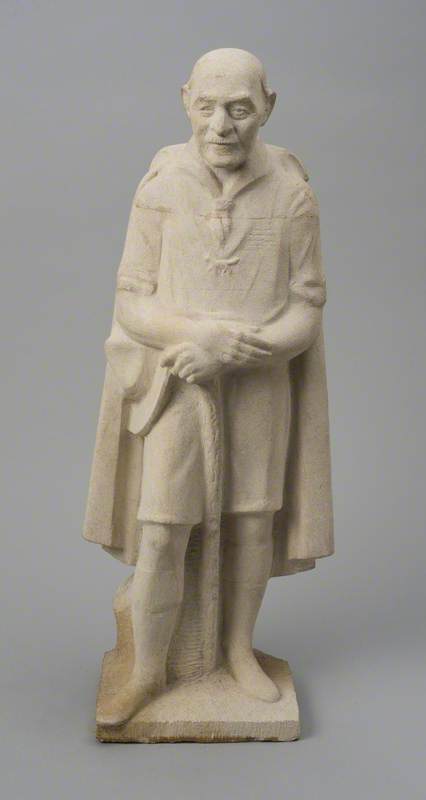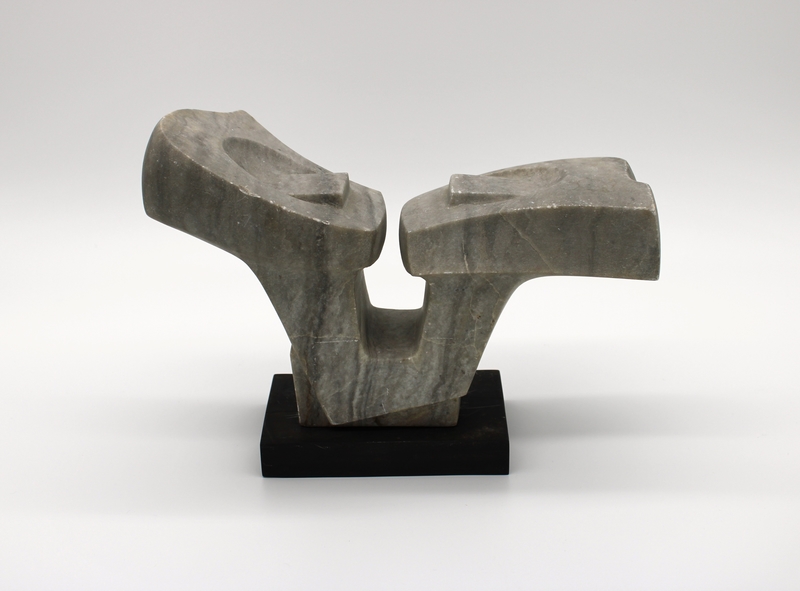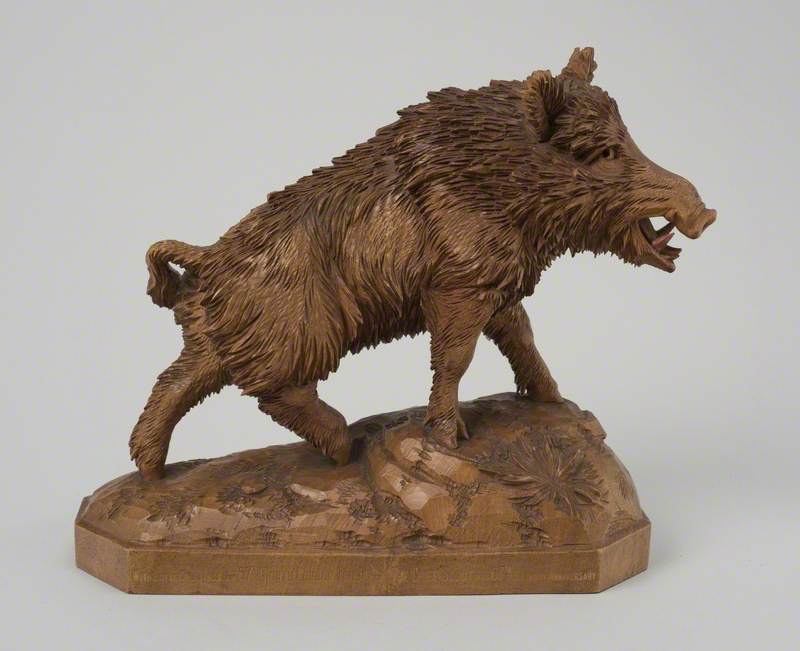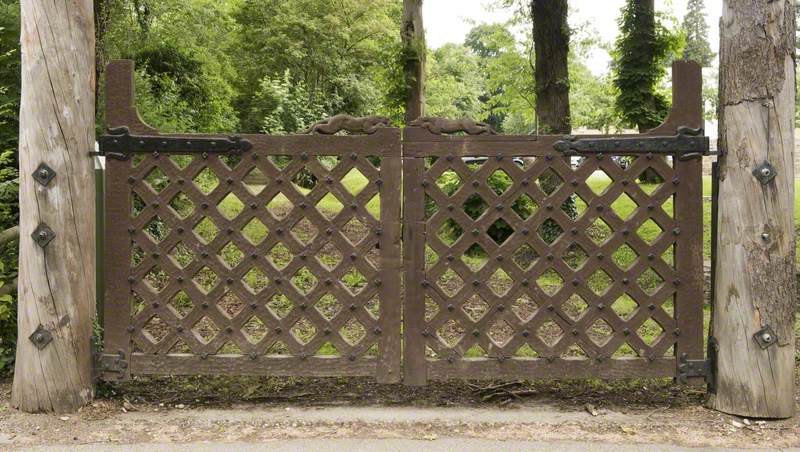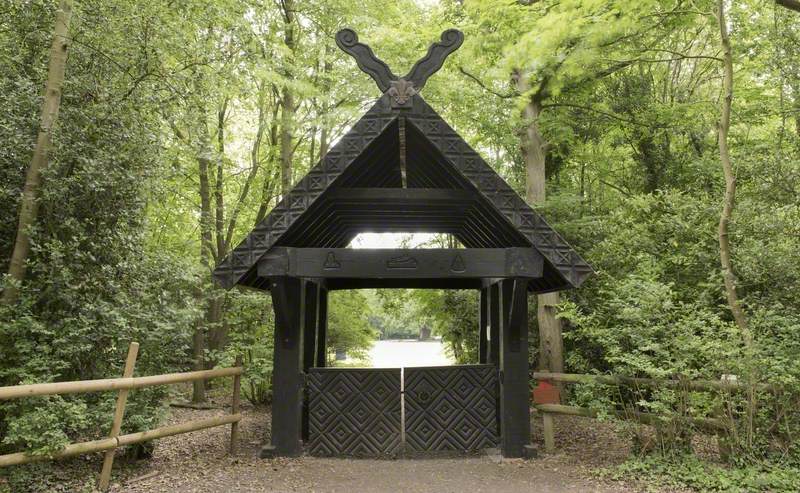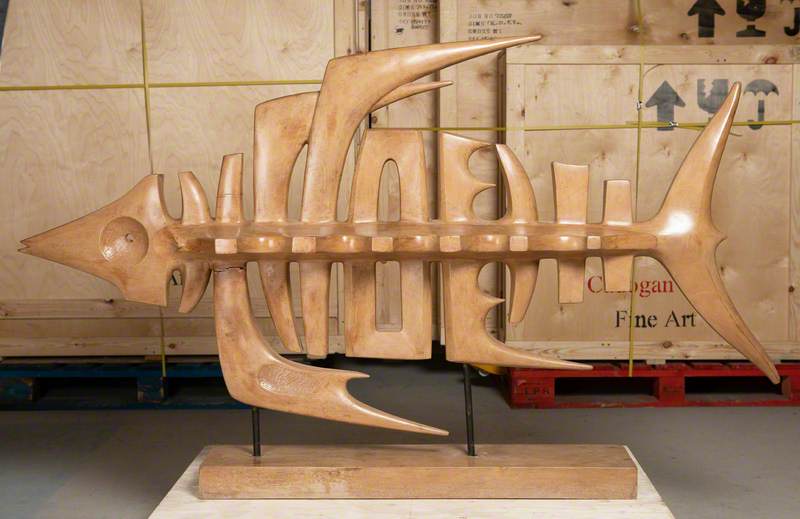Donald Steele Potter [commonly known as Donald Potter and as Don Potter] was born in in Newington, near Sittingbourne, Kent, England on 21 April 1902. He was a self-taught wood-carver and his early work was created for the Scout movement of which he was a long-time member. In 1931 he approached Eric Gill (1882-1940) who was then work on his carving of Ariel for the BBC headquarters in Portand Place, London, and asked him if he would take him on as a student. Gill interviewed him in a nearby café and agreed to take him as an apprentice at his workshop in Piggotts, High Wycombe, Buckinghamshire. He subsequently remained with Gill until 1937 during which time he developed his skills as a sculptor, carver and letter-cutter.
While working at Piggotts, Potter had his own studio and worked on his own commissions. He also exhibited with the Royal Society of British Sculptors who elected him a member and later a Fellow.
After leaving Gill, Stratton worked briefly at a Quaker prep school in Swanage, Dorset. In September 1940 he went to teach sculpture, metalwork and pottery at Bryanston school in Blandford, Dorset, where among his pupils was Terence Conran. He retired from teaching in 1984 but continued to live in Bryanston Village.
Many of Potter's commissioned sculptures are of a religious nature. These include a walnut Crucifix in St. George's Chapel, Windsor, 'St. Martin Holding the Cross' for a church in Wolverhampton as well as a Portland stone 'Lamb of God' and the main entrance frieze for All Saints' Church at Darlaston in Staffordshire. In 1934 he carved the panels for the doors of the Rare Books Room in the Radcliffe Science Library at the University of Oxford.
Other notable works included three carvings for Wolverhampton Crematorium in 1954 and a granite statue of the founder of the Scout movement, Robert Baden-Powell, in 1960-61. Potter exhibited at the Royal Academy in London on three occasions and a centenary exhibition of his work was held at Bryanston Gallery in 2002. He died in Dorset on 6 June 2004.
